Architect: Tom Weiskopf
Walkable: No carts are required. No, carts are required!
Highlighted Holes: 6, 9, 12, 15, 18*
For the life of me, I can’t think of a shorter, better way of talking about this golf course. Admittedly, I haven’t spent much time on it, but stay with me. It goes by The Ridge, which doesn’t give off golf course vibes to me and feels a titch pompous. Castle Pines? Taken. Castle Pines North? Still a mouthful. Whatever you call it, TRACPN (pronounced track-pin) exists in an ethereal plane between public golf and resort course. Despite some of the sneers it gets from golf architecture’s intelligentsia, the Furrow at Fir Fortress is a fun, occasionally quirky layout that traverses impressive rocky terrain. If you can stomach the price tag and put up with houses lining the front nine, you’ll have a good time.
Despite its cost, La Cresta is undoubtedly the most affordable golf in the neighborhood. The Country Club at Castle Pines and Castle Pines Golf Club are both Jack Nicklaus designs due south of the ridge, one of which long held the PGA Tour’s The International and plays occasional host to the BMW Championship; the other of which did not. The uber exclusive Sanctuary had the good sense not to name itself The Castle Pines Club, valiantly breaking with convention. The first reader who sends me a mental trick to telling these two clubs apart wins a free sense of superiority.
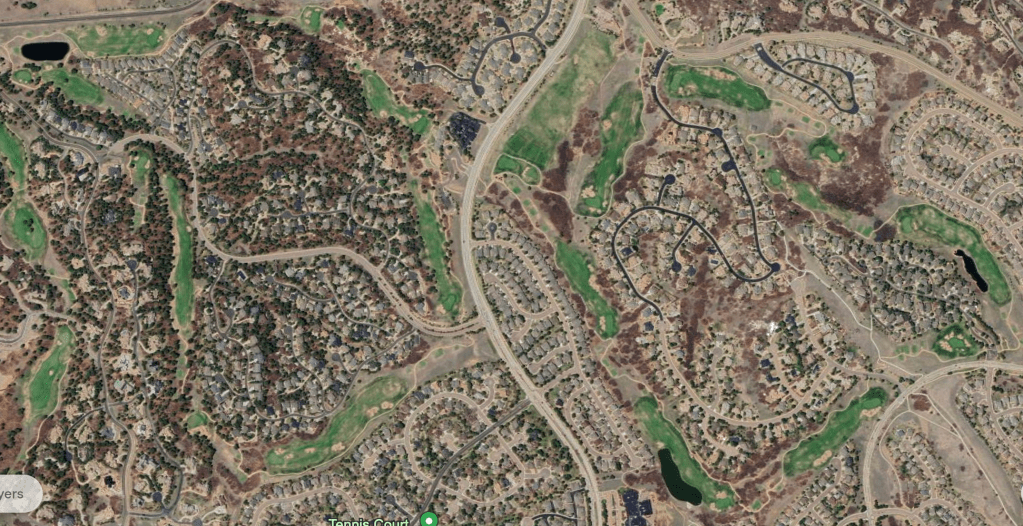
The course opened in 1997 and was designed by longtime PGA Tour member and Open Champion Tom Weiskopf. Ridge @ CastPin N. is the first Weiskopf course I’ve played and I was thoroughly impressed. Combined with his fun looking course at TPC Scottsdale, I’m going to move his other Colorado public course, Grandote Peaks, up on my list.
The City of Castle Pines’ northernmost golf course is a tale of two nines: one that weaves through a housing development and one that plays around a ridge of pines. I’ve seen criticism that the front nine is lackluster which I would emphatically disagree with. From the get go, the course introduces you to the dramatic tee shots and strategy that you can expect going forward. As much as I prefer to walk, it becomes immediately obvious why carts are required. The elevation changes tee to green and between holes would severely hobble anyone who attempted to hoof it. In what is admittedly a strange criticism, six through eighteen are so pretty and interesting that they do somewhat drown out the first five.
Six: Like any golfer of culture, Tom Weiskopf likes a good short par four. The sixth plays uphill and is framed by trees and rocks. Your knee-jerk reaction might be to pull driver and swing for the green, but well-placed greenside and end-of-fairway bunkers should make you think twice. I was thoroughly charmed by encroaching rocks, a blind fairway, and the all around aesthetic of the hole. (Don’t mistake this as an argument for framing.)
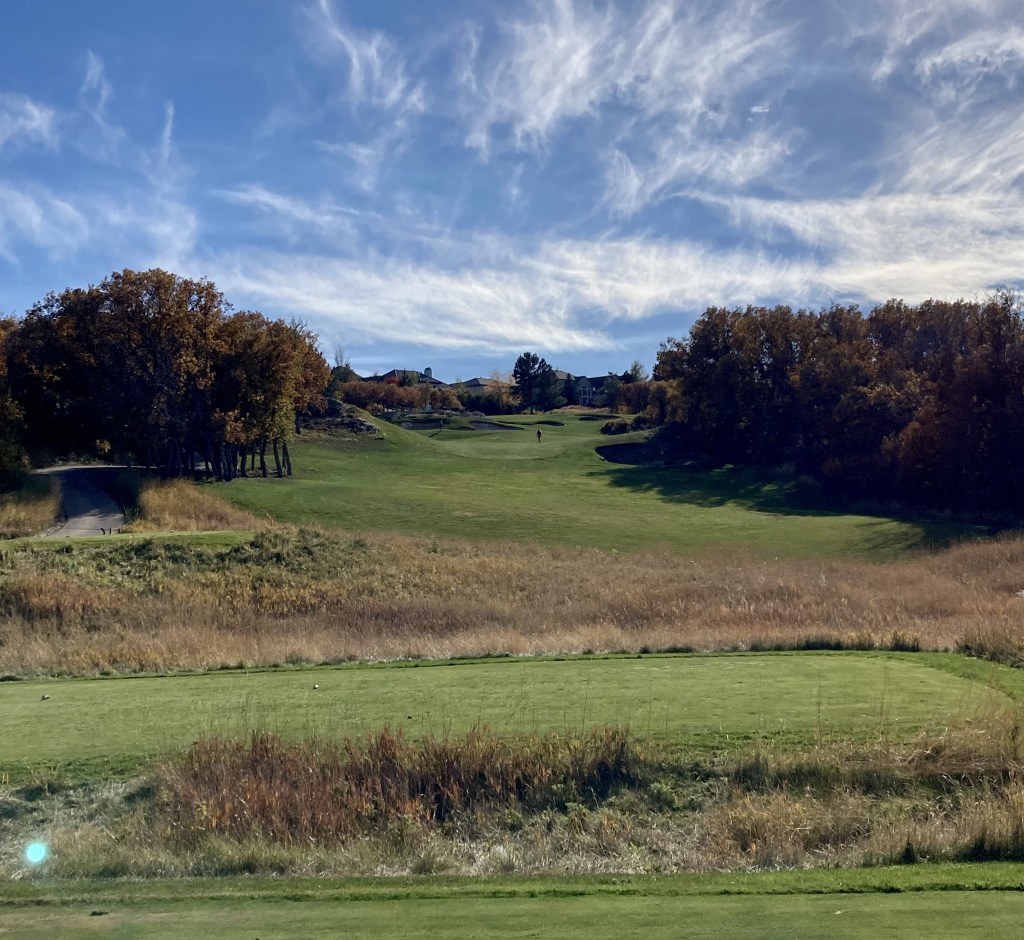
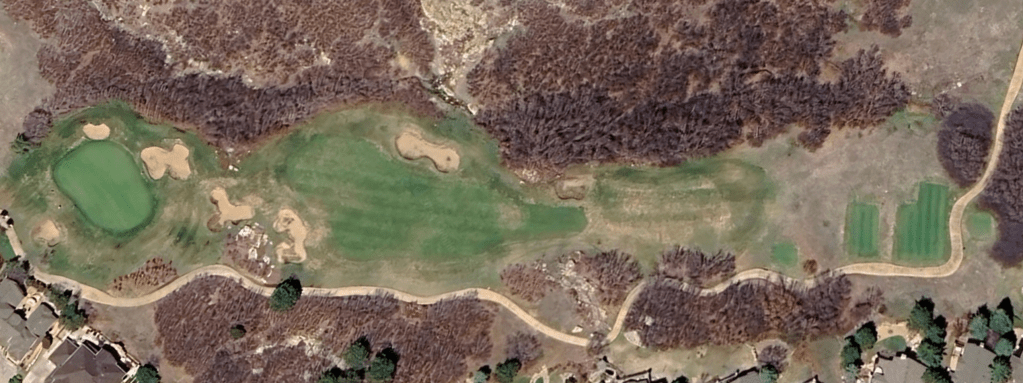
Nine: What’s the longest drive you’ve ever hit? Want to take a shot at eclipsing that? Nine is long on paper, but from the tee it becomes apparent that you might have the opportunity to really catch one. Groves of bushes line the left and the right and if you’re inspired to swing hard, you might end up rooting around in them looking for your ball. As a bonus, the hole has a front bunker that’s shapes like a cartoon moose.

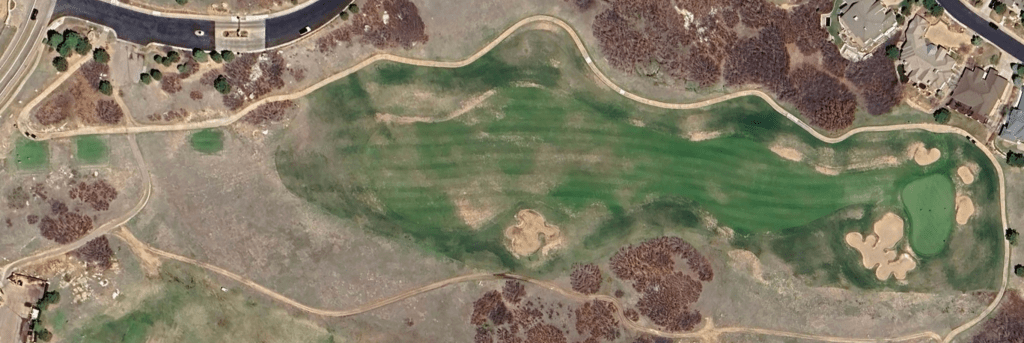
Twelve: We are back at the top of a hill for the par three twelfth. With a beautiful green complex surrounded by pines and requiring a shot over the same bushes found throughout the course, you are forgiven for being a little nervous before you tee off. Trust whatever wood or long iron you have in your hand and, as long as you keep the ball in play, get up and down for your par.
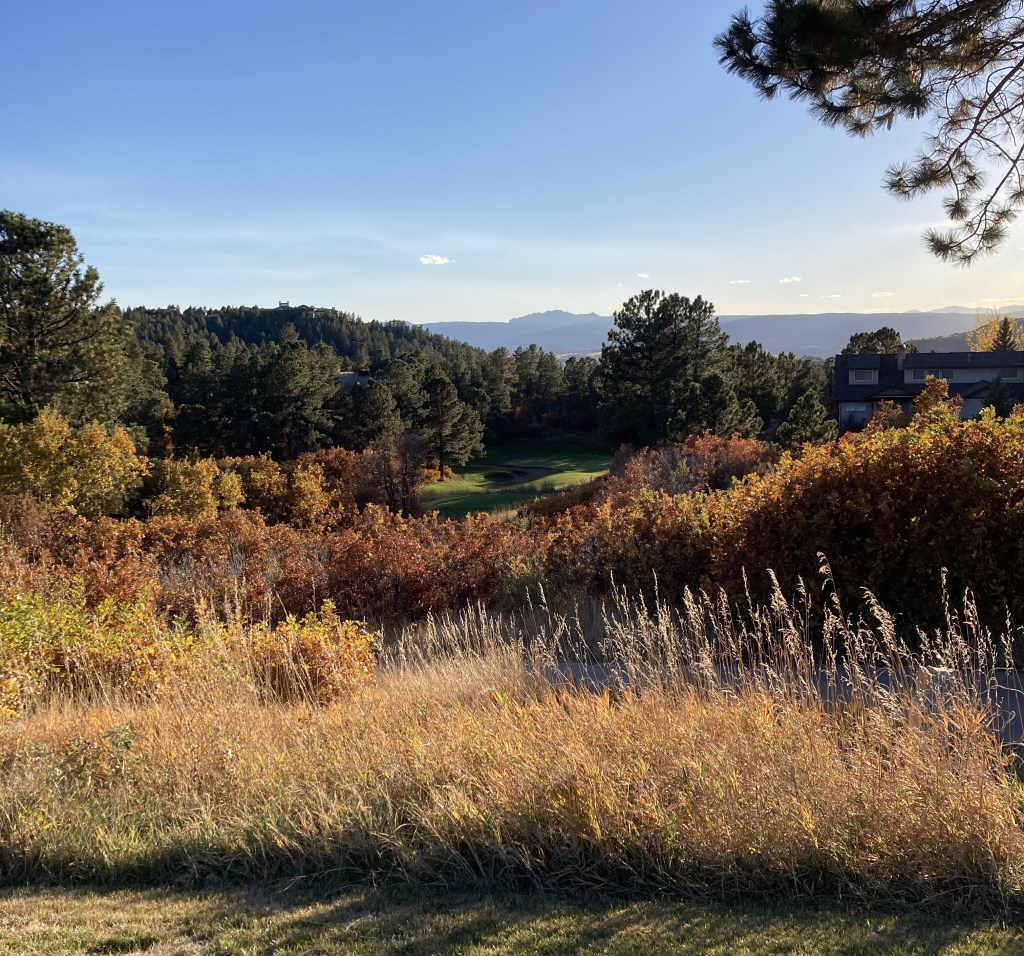

Fifteen: An absolute delight to play. This is another one of Weiskopf’s famous short par fours. The trick is to keep the tee shot away from the pine tree in the middle of the fairway. The green is guarded by a creek to the front and more pine trees to the right. There’s nothing straightforward about this hole making it one of my favorites on the course.
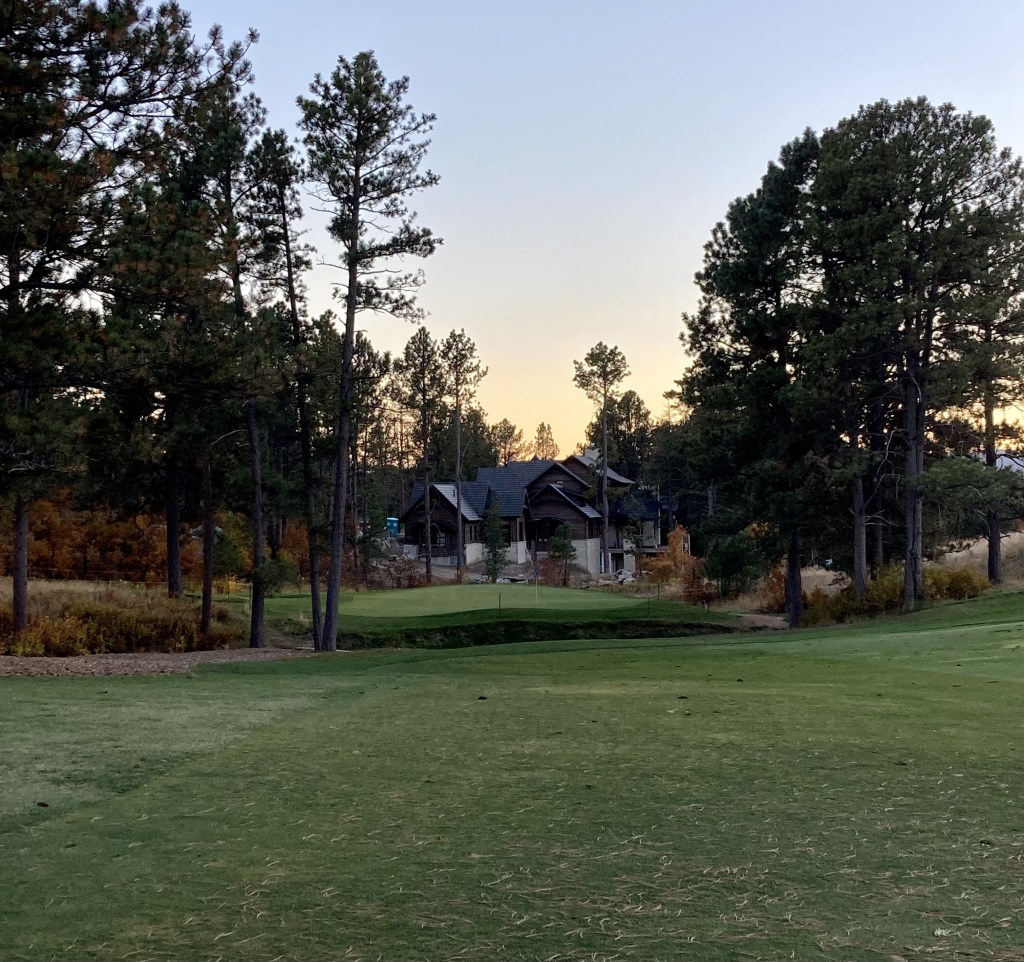

Eighteen: The eighteenth has the unique distinction of being the only hole I’ve played but never seen. Rather than leaving this as a riddle with a prize for the winning guess, I’ll explain. We were two groups behind a pretty slow foursome and had been racing the sunset for a couple of holes. By the time we got to the tee, it was pitch dark. The tee was on top of a rocky ridge that sits over the 17th green. If Google Maps is any indication, this is a pretty neat golf hole.

Final thoughts: New rule: If there’s not a castle, or ruins of a castle, that dates back to the 10th century within fifty miles, you have to think of a better name for your golf course. For the record, the first White Castle wasn’t built until 1921. If you’re willing to accept the price and spend your round playing cartball, you’ll have a great time at La Cresta en el Castillo de Pinos al Norte.
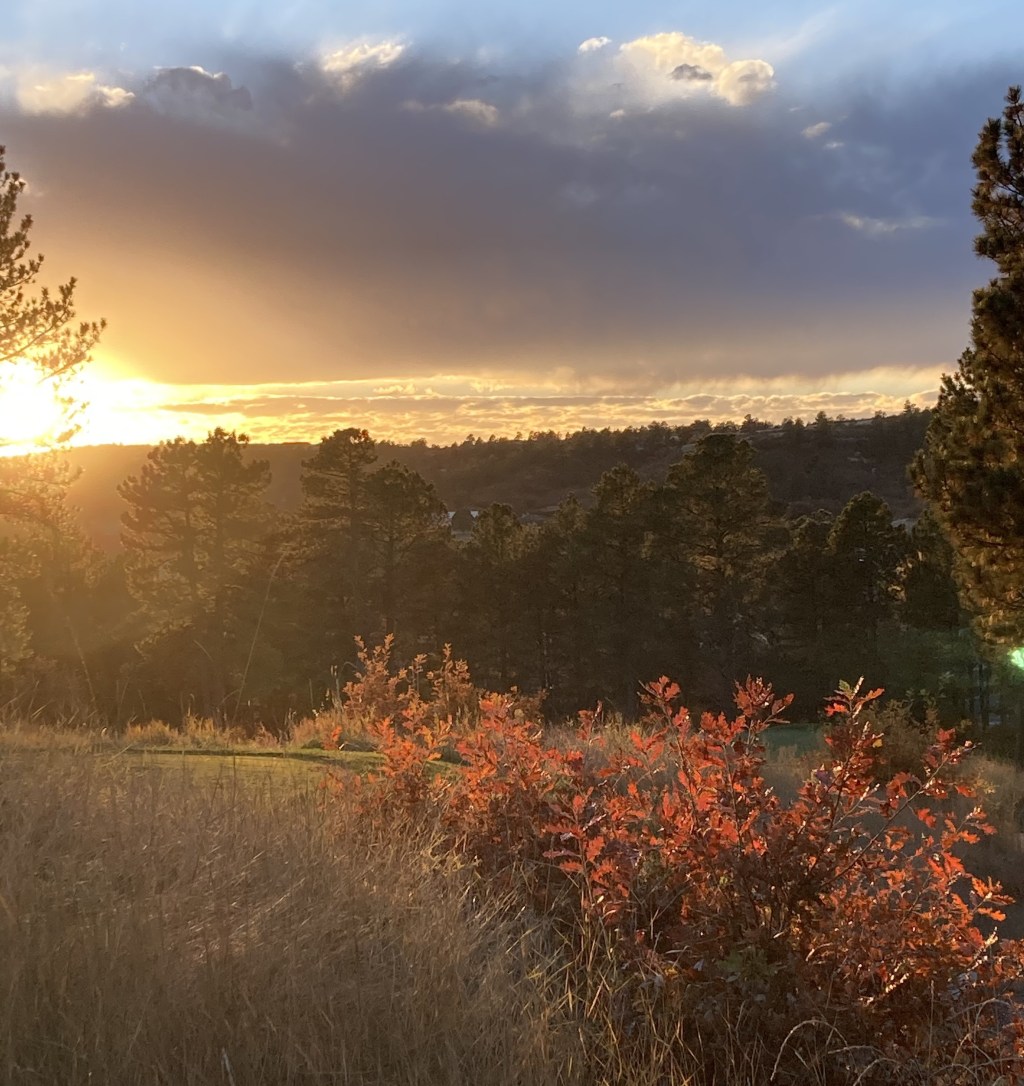
Leave a comment